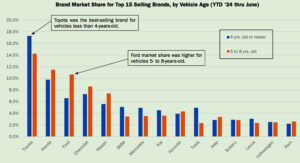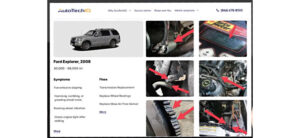Fatigue detection, attention assistance, and child presence detection in safety rating agencies drive this growth at a CAGR of 25% between 2023 and 2030
New York—Driver and Occupant Monitoring Systems will be the fastest-growing active safety system over the decade, growing at a CAGR of 25% between 2023 and 2030, according to a new report by global technology intelligence firm ABI Research. Regulation and the standardized testing of fatigue detection, attention assistance, and child presence detection in safety rating agencies, such as NCAP, drive this growth.
“Just as external Advanced Driver-Assistance Systems (ADAS) have relied on sensor fusion to deliver robust perception of the outside environment, so too will in-cabin perception be powered by a mixture of active sensors,” said James Hodgson, Smart Mobility & Automotive Research Director at ABI Research.
“Initial deployments with highly driver-focused applications will rely on single camera solutions, with wide Field of Views (FOVs) to detect multiple vectors of driver distraction and impairment. However, as safety objectives for passengers in the rear seat gain prominence, radar technologies including 60GHz and UWB-radar will complement camera sensors.”
Millimeter-wave (mmWave) radar is the ideal technology for Child Presence Detection (CPD) delivery. This safety application detects if children have either been left behind or have gained access to a vehicle and become trapped inside.
CPD will detect signs of life in the rear of a locked car, alerting the owner or emergency services and activating the HVAC system where possible to prevent deaths from hyperthermia. mmWave radar can penetrate through occlusions such as the driver / front passenger, front seats, and child blankets to detect forgotten children in areas that camera sensors cannot see. mmWave sensors can also catch the subtle movements associated with breathing and heartbeat, resulting in more robust detection of a forgotten child, as opposed to an empty child seat or a forgotten luggage item.
Volvo has pioneered the first radar-based CPD system, set for its introduction on the EX90 SUV, which will leverage three 60GHz radar sensors.
This wavelength benefits from broad regulatory approval for in-cabin sensing in key automotive markets and a broad range of application-specific solutions from vendors such as TI, Infineon, and Socionext.
In the long term, UWB sensors equipped to vehicles to power the smart access use-case could also be repurposed to deliver the CPD use-case without needing an additional 60GHz radar — an approach pioneered by NXP.
Increasingly, active safety systems are rapidly jumping from a niche system to commonly adopted safety technology, driven by regulations such as GSR 2 in Europe and by the work of safety-ratings agencies.
“With no scope to differentiate via commoditized safety applications, it is vital that every opportunity to repurpose the enabling technologies behind the safety application to deliver unique and differentiating experiences,” Hodgson said. “In-cabin camera/radar sensor fusion offers a new avenue for automakers to understand how drivers and passengers engage in the vehicle space and build infotainment experiences around a rich understanding of their customers.”






Comments are closed.